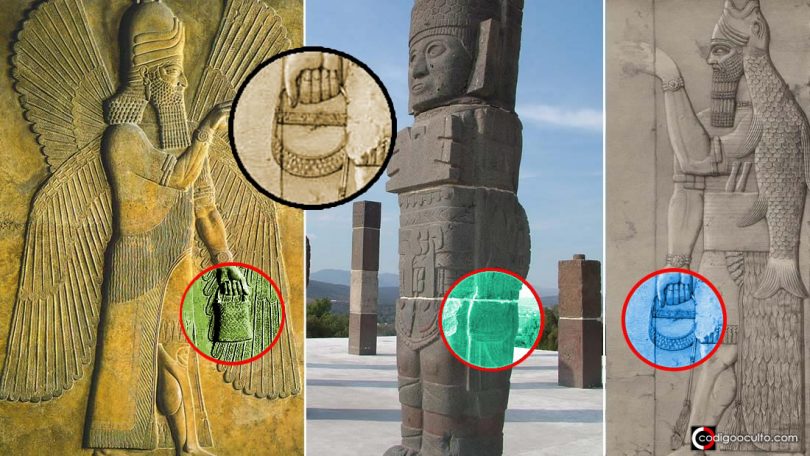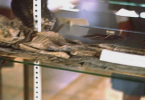The mysterious purse of the gods displayed by various ancient civilizations separated by more than 12,700 kilometers apart, from Sumer to Mesoamerica.
This mysterious bag is observed in sculptures and bas-reliefs of Sumeria of 6,000 years ago (the Anunnaki carried it) and in the temple of Göbekli Tepe of the millennium 10 BC. C. It is also carried by Mesoamerican deities (the Olmecs, Toltecs, Aztecs , etc.) and Australia . Its symbology is enigmatic, it could represent a type of universal standard weight measure or be part of the equipment of alien gods with futuristic technology.
The mysterious purse of the Gods: paradigmatic pictographs
The Sumerians from the beginning of their civilization in 4,500 BC. They portrayed the Anunnaki with peculiar artifacts , such as the pine cone , a type of “wrist watch” and this mysterious bag . Many pictographs show a winged god holding a pine cone in one hand and the divine purse in the other.
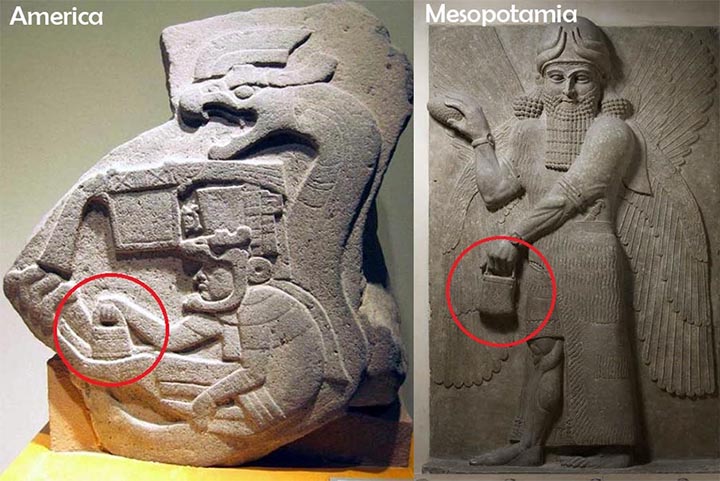
Other images show Adapa, Dagon or the fish god Oannes holding it. This aquatic god emerged from the waters of the Persian Gulf and founded civilizations , according to Mesopotamian mythology. 12,700 kilometers away , in Mesoamerica, sculptures of the Mayans, Aztecs, Toltecs and Olmecs show the same artifact.
The most prominent Mesoamerican example is from the Olmecs , at the La Venta archaeological site in Mexico . There is a stone engraving of the god Quetzalcoatl holding the same bag of the gods that the Anunnaki carried . This site was founded in 1750 BC.
Atlanteans of Tula and Göbekli Tepe
Another impressive example is in the monumental Toltec statues of the Atlanteans of Tula (in Tula, Mexico). They are representative warriors of Quetzalcóatl and carry the enigmatic contraption, although it is thought to be an atlat or dart thrower .
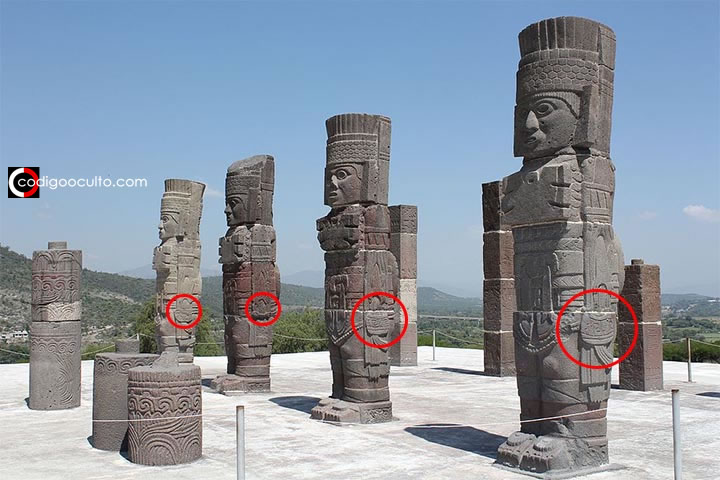
In Göbekli Tepe we found it. This massive temple located in Turkey is considered the oldest in history , from the 10th millennium BC. C. The artifact appears on Pillar 43 , in a row of three bags and on figures of animals such as birds and snakes.
Also tribes of ancient Australia painted images of this bag of the gods, in addition to the Native Americans of California , United States, mainly for the Coso petroglyphs . It should be noted that in Ancient Egypt a similar device is noted: the ankh or Egyptian cross , which is loaded in a similar way.
Symbol of a standard weight?
According to the book Ice Age Language: Translations, Grammar and Vocabulary by Dr. Robert Duncan-Enzmann and Jay R. Snyder, the symbol on the bag expresses a standard weight , a standard of weighing. This “standard weight” also denotes a “weight of authority” or “weight of power” , as it was always drawn being held by the Anunnaki or by Sumerian kings (authorities with power).
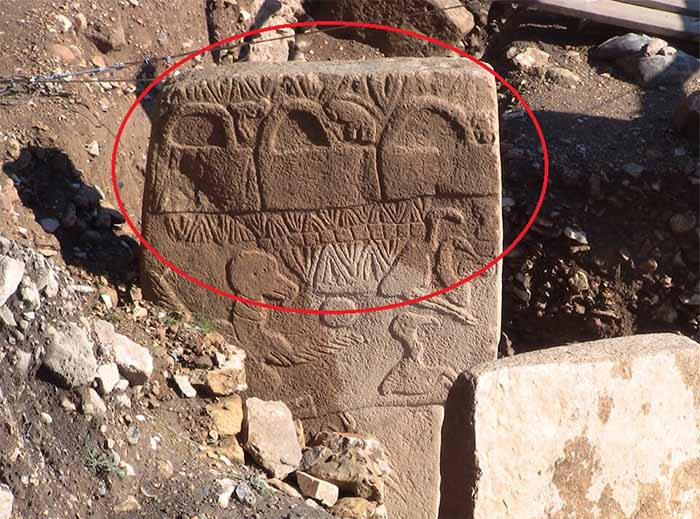
Another more futuristic explanation is in that of the ancient astronauts , that these artifacts could have been bags for cosmonaut equipment , since they are similar to those used today and because those ancestral gods were celestial travelers .
The interpretation of the standard weight makes sense but does not explain why various ancient civilizations of the world engraved the same bag of the gods . You might think that the Anunnaki and the ancient gods of places like Mexico, Guatemala, North America and Australia were the same deities .

